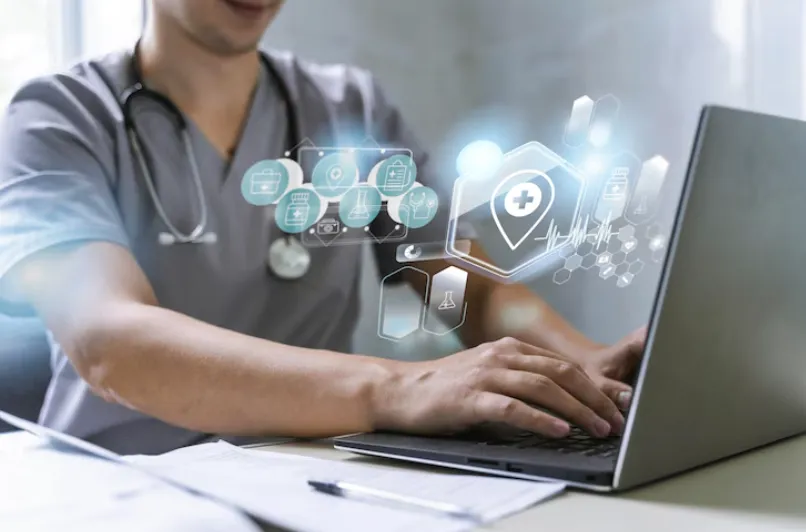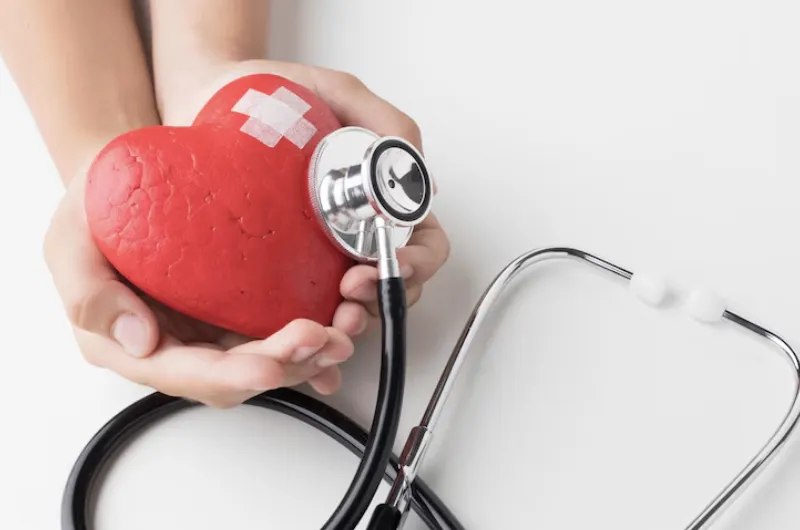Technology has transformed nearly every aspect of our lives, and healthcare is no exception. The integration of digital tools, data analytics, artificial intelligence (AI), and wearable devices has led to significant advancements in how we manage, monitor, and improve our health. Far beyond just convenience, technology is actively shaping a future where health outcomes are improved, diseases are more easily prevented or treated, and individuals have more control over their well-being.
In this article, we explore the positive effects of technology on health, focusing on various areas such as telemedicine, wearable technology, AI in healthcare, and mental health apps.
1. Telemedicine: Improving Access and Convenience
One of the most noticeable impacts of technology in healthcare is the rise of telemedicine. Telemedicine allows patients to consult with healthcare providers remotely through video calls, messaging apps, and other digital platforms. This technology has significantly improved access to medical care, particularly for people in rural areas, those with mobility issues, or during times of crisis, such as the COVID-19 pandemic.
a. Increased Accessibility
Telemedicine breaks down geographical barriers, giving patients access to doctors, specialists, and medical professionals from the comfort of their homes. It eliminates the need for long trips to healthcare facilities, which is especially beneficial for individuals who live in remote areas or lack reliable transportation.
b. Cost Savings
By reducing the need for physical visits to the doctor’s office, telemedicine often results in lower healthcare costs. Patients can receive consultations, follow-up care, and even prescriptions without incurring expenses related to travel or time off work.
c. Timely Care
Telemedicine enables quicker medical consultations, meaning that patients can address health issues promptly, preventing the progression of illnesses. The convenience of booking appointments online and receiving immediate care from healthcare professionals helps reduce the strain on emergency rooms and hospitals for non-urgent cases.
2. Wearable Technology: Promoting Preventative Health
Wearable technology, such as fitness trackers, smartwatches, and health-monitoring devices, has become an essential tool for promoting preventative health and encouraging healthy lifestyles. These devices allow individuals to track their daily activity levels, heart rate, sleep patterns, and other vital signs, providing a wealth of health data that can be used to make better-informed health decisions.
a. Encouraging Physical Activity
Devices like Fitbit, Apple Watch, and Garmin track steps, calories burned, and active minutes, motivating users to move more and meet their fitness goals. By setting daily targets and receiving reminders to stay active, people can integrate more exercise into their routines, contributing to better cardiovascular health and weight management.
b. Monitoring Chronic Conditions
For individuals with chronic health conditions such as diabetes, hypertension, or heart disease, wearable devices can provide continuous monitoring of vital signs. Some devices are capable of monitoring blood sugar levels, heart rate variability, and even detecting irregular heartbeats (such as atrial fibrillation). This real-time data helps both patients and healthcare providers detect potential health issues early, leading to timely interventions.
c. Improving Sleep Health
Sleep is crucial to overall well-being, and many wearables track sleep quality, duration, and patterns. By monitoring metrics like sleep stages (deep, light, and REM sleep) and disruptions, users can identify poor sleep habits and take steps to improve sleep hygiene, which positively impacts energy levels, cognitive function, and mental health.
3. Artificial Intelligence: Revolutionizing Diagnosis and Treatment
Artificial Intelligence (AI) has emerged as a powerful tool in the medical field, providing assistance in diagnosing diseases, developing treatment plans, and even discovering new drugs. AI algorithms can analyze vast amounts of medical data, including imaging scans, lab results, and patient histories, to identify patterns that might be missed by human eyes.
a. Enhancing Diagnostic Accuracy
AI-powered diagnostic tools, such as those used for interpreting radiology scans or detecting cancer in early stages, are helping doctors make more accurate diagnoses. Machine learning algorithms can detect abnormalities in medical images, such as X-rays, MRIs, and CT scans, with a high degree of precision, allowing for earlier detection of diseases like cancer, lung conditions, and cardiovascular disorders.
b. Personalized Treatment Plans
AI is also being used to develop personalized treatment plans for patients. By analyzing genetic information, lifestyle data, and treatment histories, AI can recommend tailored medical interventions that are more likely to be effective for individual patients. This is particularly valuable in fields like oncology, where personalized treatments based on genetic markers can lead to better outcomes.
c. Accelerating Drug Discovery
AI has accelerated the process of drug discovery by analyzing existing medical research, identifying potential compounds, and predicting their effects on the human body. This technology has the potential to bring new treatments to market faster, potentially saving lives by addressing diseases more efficiently.
4. Mobile Health Apps: Supporting Mental and Physical Wellness
The rise of mobile health apps (mHealth) has empowered individuals to take control of their health in ways that were previously unimaginable. From managing chronic conditions to supporting mental health, mobile apps provide users with instant access to health information, tools, and resources.
a. Mental Health Apps
Mental health apps such as Calm, Headspace, and Woebot have gained popularity for their ability to provide mental health support through guided meditation, mindfulness exercises, and cognitive behavioral therapy (CBT) techniques. These apps are designed to reduce stress, anxiety, and depression by promoting emotional well-being and offering therapeutic interventions at users’ fingertips.
For individuals who may not have access to traditional therapy or prefer to manage their mental health independently, these apps offer an accessible and affordable solution.
b. Chronic Condition Management
Apps that assist with the management of chronic conditions, such as diabetes (e.g., mySugr) and hypertension, allow users to track their health metrics, set reminders for medication, and even receive feedback from healthcare professionals. This kind of technology promotes better disease management and improves patient adherence to treatment protocols, leading to better long-term health outcomes.
c. Nutrition and Fitness Apps
Apps like MyFitnessPal and Lose It! allow users to log their daily food intake, track macronutrients, and monitor calorie consumption, making it easier to maintain healthy eating habits. These apps, paired with fitness trackers, create a holistic approach to wellness by providing real-time feedback on physical activity and dietary choices.
5. Robotics in Healthcare: Improving Surgery and Patient Care
The field of robotics has also seen substantial advancements in healthcare, particularly in surgery. Robotic-assisted surgery allows surgeons to perform complex procedures with greater precision, flexibility, and control than traditional methods. This leads to better outcomes for patients, including smaller incisions, less pain, and faster recovery times.
a. Robotic Surgery
Robotic surgery systems, such as the da Vinci Surgical System, enable surgeons to perform minimally invasive procedures with the assistance of robotic arms that are more precise than the human hand. This technology is particularly useful in delicate surgeries, such as prostate or heart operations, where even the smallest movement can impact the outcome.
b. Automation in Patient Care
Robotic systems are also being developed to assist with patient care tasks, such as dispensing medications, monitoring vital signs, and assisting with rehabilitation. These robots can reduce the workload of healthcare professionals, allowing them to focus more on patient interaction and personalized care.






